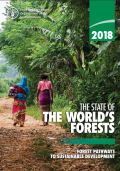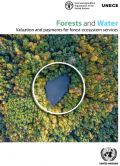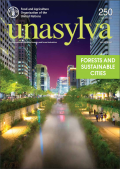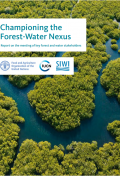FAO Publications
The State of the World’s Forests 2018 provides detailed analysis aimed at capturing the contribution of forests and trees to 28 targets relating to ten SDGs. Through thematic metrics bringing together available evidence from a wide range of sources, a clearer picture is emerging of the full impact that forests and trees have on many other crucial areas of development.
The objectives of this study are to further improve our understanding about the ways in which payments for ecosystem services schemes can be applied to forests, in particular focusing on forest’s hydrological functions for the mutual benefit of both humans and the environment. In addition, the study covers advances and challenges facing these schemes and provides practical guidance for policymakers and practitioners. This study contains the most comprehensive currently available database of case studies on water-related payment for forest ecosystem services schemes in the UNECE region.
Recently, Unasylva launched its 250 issue-focusing on forest and sustainable cities- amid, a suite of articles that unpack the forest-urban development nexus-the contribution ‘ Forests as nature-based solutions for ensuring urban water security’ pages 43-53- emphasized that increasing international attention on urban water security can serve as an opportunity to deploy smart, green, cost-effective water management policies in towns and cities and their extended environs.
Championing the Forest-Water Nexus
March 2018
March 2018
This working paper summarizes the outcomes of a meeting with 12 experts from the forest and water sectors hosted parallel to World Water Week.
Except of the outcomes, this publication covers a background to the connection of forests and water, forest-water issues, and a joint statement on forest and water relationships. The statement can be downloaded separately here.
This publication has been co-authored by the Food and Agriculture Organization of the United Nations (FAO), the International Union for Conservation of Nature (IUCN), and SIWI.
The involvement of communities in watershed management is essential. Communities are effected by what happens in a watershed, and their actions influence the downstream availability and quality of water, as well as other ecosystem services. Ensuring gender balance in decision-making processes is a key element in the new generation of watershed management programmes and projects. A case study from Pakistan supports the importance of gender equality in watershed management.





